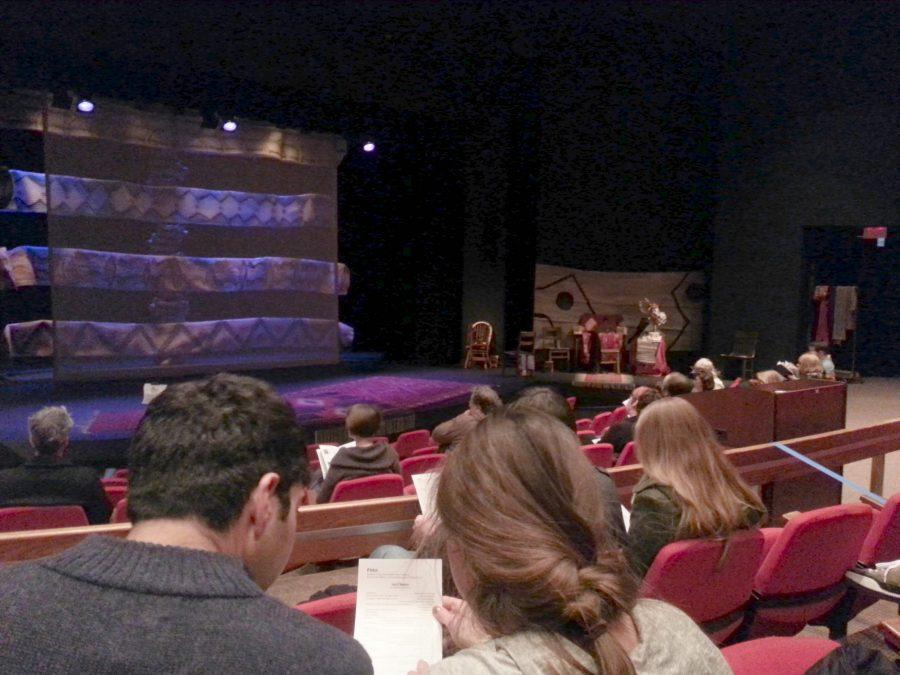The sounds of the instrumentalists warming up filled Chatham’s Eddy Theatre on Sunday, November 2, as audience members entered and took their seats for the fourth and final performance of the Microscopic Opera Company’s show, “Frida.”
Written by Robert Xavier Rodriquez, “Frida” is about the life of the iconic Mexican artist Frida Kahlo.
The Microscopic Opera Company which, according to its website, “creates innovative, thoughtful and cutting edge performances of contemporary chamber opera, featuring professional artists in the Pittsburgh area,” put on the show as a collaboration with Chatham University, Carnegie Mellon University, and the University of Pittsburgh.
The stage in Eddy Theatre was set up in a minimalist style, with a set that consisted of tapestries and a projection screen, as well as a small desk and chair (meant to represent Frida’s bedroom) set up on the right side of the stage.
By the time the show started there were about 80 people in attendance, and a hush came over the crowd as the orchestra director Robert Frankenberry took the stage and, in accordance with theatre tradition, was met with an enthusiastic round of applause before he took his place with the orchestra.
The overture began with soft drawn out notes on the piano and violin, and gradually the rest of the instruments joined in to create a slightly mysterious melody that culminated with Raquel Winnica Young, the actress playing Frida Kahlo, entering the stage, with a photograph of the real Kahlo’s face projected on the screen behind her. She then walked over to the desk, where a camera system projected a live stream of her face superimposed over the image of Kahlo in the screen.
This technique of projected images was a theme throughout the show, with still images and video footage of Kahlo throughout her life constantly displayed behind the action on stage.
Also found several times throughout the show were day of the dead masks, used to represent the theme of death in Kahlo’s life.
Another unique feature of this particular opera was the fact that it was, for the most part, in English. There were a few lines of Spanish, but all of the translations were projected on the wall above the pit orchestra, making it easy for the audience to follow along with the narrative.
The show was essentially an operatic biography of Kahlo’s life beginning with her schoolgirl years and progressing through her involvement in a tragic bus accident which left her permanently disfigured and in chronic pain; her marriage, divorce, and remarriage to Diego Rivera; her time living in New York City; and her eventual death in Coyoacán, Mexico.
The show was filled with evocative and poignant lines like, “The only road to heaven shouldn’t be through hell on Earth,” which was said in reference to the rampant poverty and death that existed in Mexico before the revolution in 1910.
Young also boldly exclaimed, “I was born the same day as the revolution!” which was a fact that Kahlo did claim throughout her life, despite the fact that she was actually born three years before the revolution began
Several times in the show actors seemed to speak directly to the audience, like in the sequence after the bus accident in which George Milosh, who played Kahlo’s love interest at the time, sat cross-legged on stage describing all of Kahlo’s injuries to the audience.
The brilliant staging was the product of the show’s director, and general director of the microscopic opera company, Gregory Lehane.
The show ended with the death of Frida, however it did not leave the audience feeling unhappy. Instead, Young left the stage with an enthusiastic cry of, “ Viva la vida…alegria…and Diego,” which accurately embodied everything that Kahlo stood for in her life.


